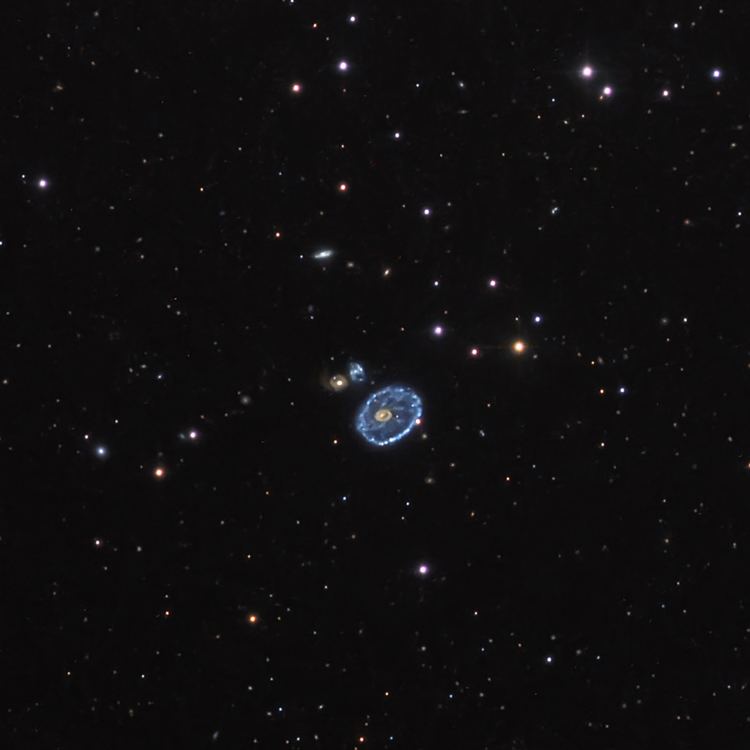Right ascension 00 37 41.1 Redshift 9050 ± 3 km/s Type S pec (Ring) Apparent mass ~3.85 billion M☉ | Declination −33° 42′ 59″ Distance 500 Mly (150 Mpc) Size ~130,000 ly (diameter) Magnitude 15.2 Apparent magnitude (V) 15.2 | |
 | ||
Similar Tadpole Galaxy, Comet Galaxy, Hoag's Object, Sombrero Galaxy, Black Eye Galaxy | ||
The Cartwheel Galaxy (also known as ESO 350-40) is a lenticular galaxy and ring galaxy about 500 million light-years away in the constellation Sculptor. It is an estimated 150,000 light-years diameter, and a mass of about 2.9–4.8 × 109 solar masses; it rotates at 217 km/s.
Contents
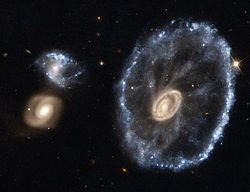
It was discovered by Fritz Zwicky in 1941. Zwicky considered his discovery to be "one of the most complicated structures awaiting its explanation on the basis of stellar dynamics."
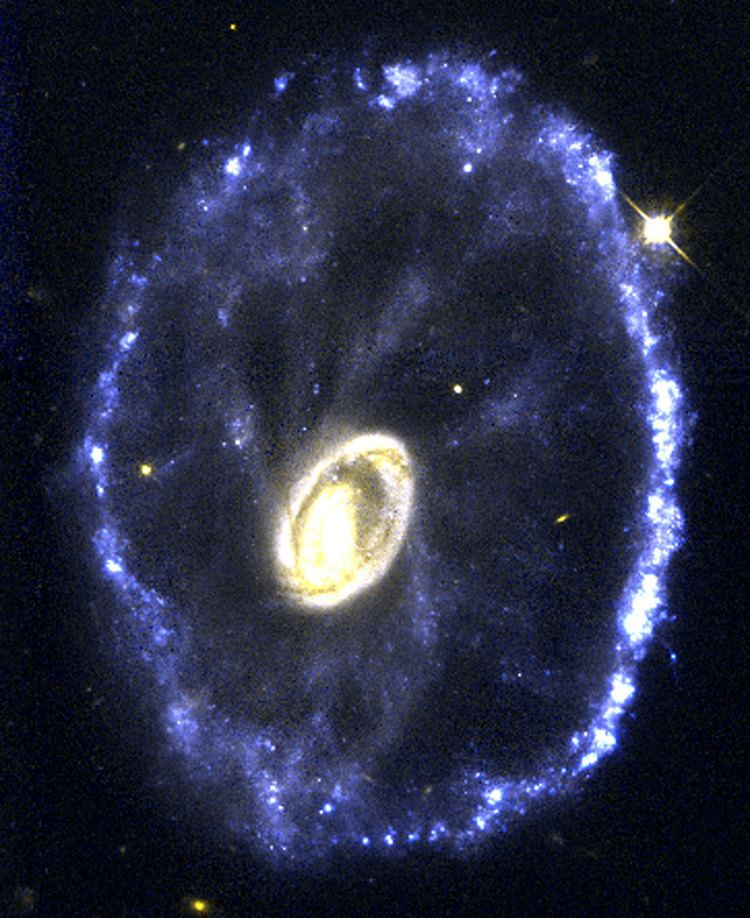
An estimation of the galaxy's span resulted in a conclusion of 150,000 light years, which is slightly larger than the Milky Way.
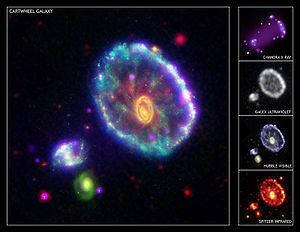
The history of the cartwheel galaxy
Structures
The Cartwheel galaxy shows non-thermal radio and optical spokes, but they are not the same spokes.
Evolution
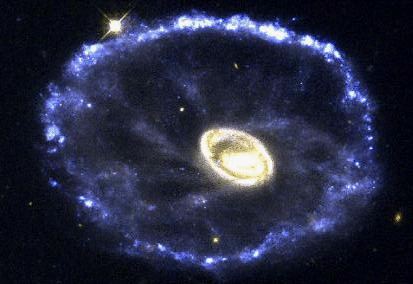
The galaxy was once a normal spiral galaxy before it apparently underwent a head-on collision with a smaller companion approximately 200 million years ago (i.e., 200 million years prior to the image). When the nearby galaxy passed through the Cartwheel Galaxy, the force of the collision caused a powerful shock wave through the galaxy, like a rock being tossed into a sandbed. Moving at high speed, the shock wave swept up gas and dust, creating a starburst around the galaxy's center portion that were unscathed. This explains the bluish ring around the center, brighter portion. It can be seen that the galaxy is beginning to retake the form of a normal spiral galaxy, with arms spreading out from a central core.
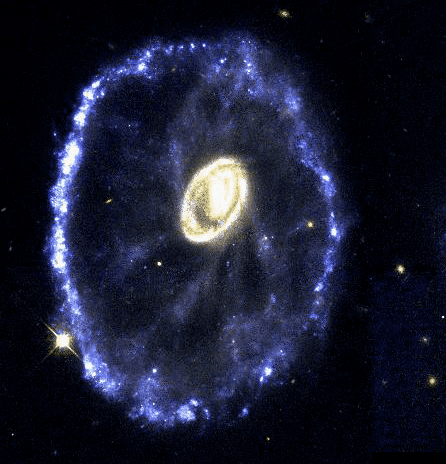
Alternatively, a model based on the gravitational Jeans instability of both axisymmetric (radial) and nonaxisymmetric (spiral) small-amplitude gravity perturbations allows an association between growing clumps of matter and the gravitationally unstable axisymmetric and nonaxisymmetric waves which take on the appearance of a ring and spokes.
